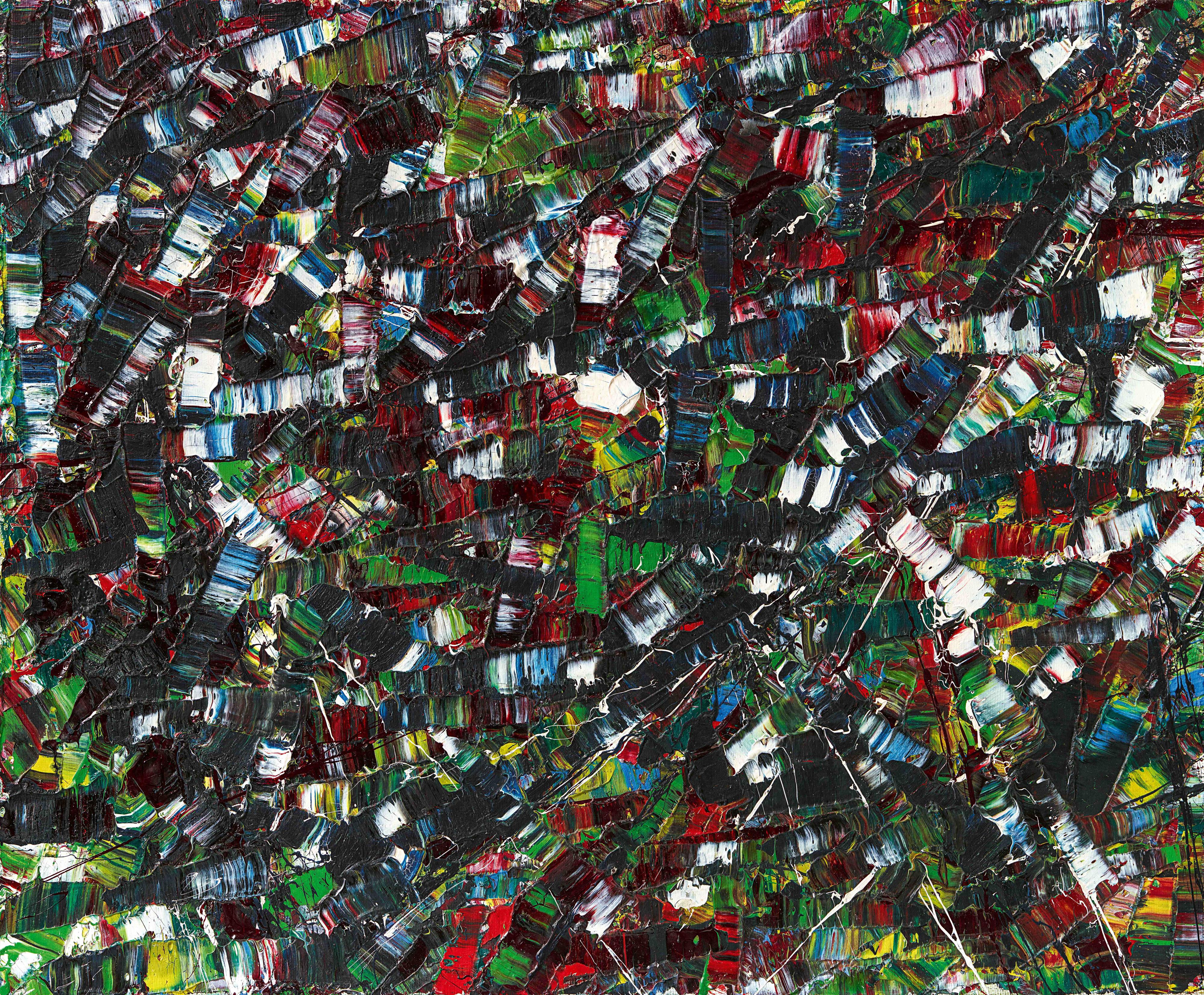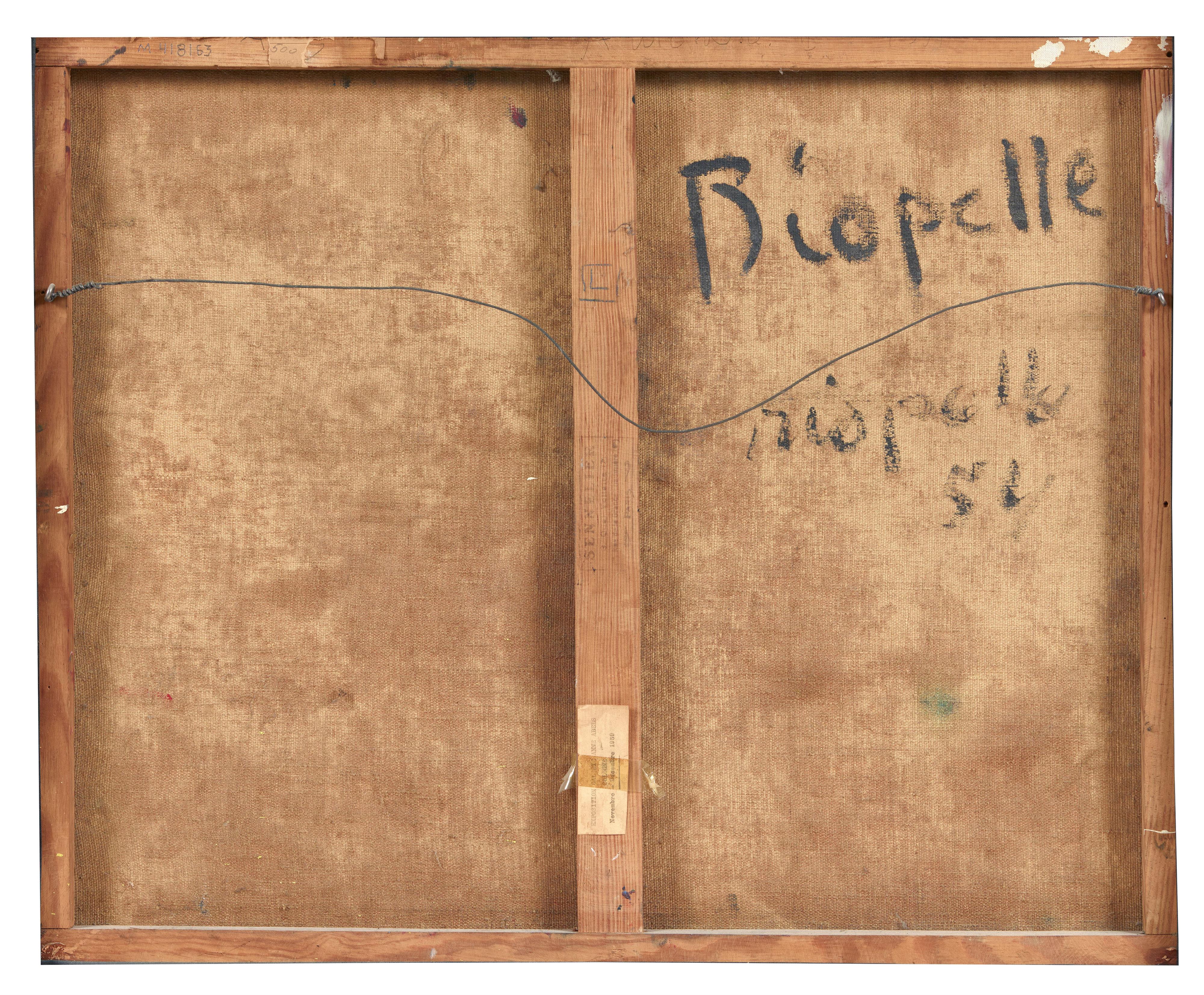Jean-Paul Riopelle
Automne II-Symphonie
1954
Oil on canvas. 60 x 73 cm. Framed. Signed and dated 'Riopelle Riopelle 54' on canvas verso. - Minor traces of age.
Back in 1945 in Montréal, where he studied, the Canadian Jean Paul Riopelle became a member of the artist group “Les Automatistes“ who were influenced by action painting. In 1947, he moved to the art metropolis Paris. Here, in his encounter with the works of fellow Surrealists, artists working in the Tachist and Informal styles such as Pierre Soulages, Wols and Georges Mathieu, Riopelle found his characteristic mode of expression. After 1950, inspired by the “all-over-paintings” of Jackson Pollock, he implemented an energetically automated and yet controlled technique whose “natural force” Werner Schmalenbach described as follows: ‘This is no longer painting as it used to be. The painting tools are wielded like weapons. Painting becomes fencing. In powerful blows, the palette knife tears sharp paths in the paint flung across the canvas. If the paint has already been applied impasto, the palette knife ploughs it up into valleys and ridges. The surface becomes a turbulent relief.’ (Exhib.cat. Jean-Paul Riopelle, Kestner-Gesellschaft Hanover 1958/1959, p.9f.).
“Automne II – Symphonie” was created during a peak phase of Riopelle’s creative development. The radiant, mosaic-like colour relief is evidence of the confident, individual handwriting and colouristic talent of the then young artist.
The latent nature references of Riopelle’s paintings are partially already apparent through the chosen titles. “Automne II – Symphonie” evokes, similarly to paintings of the same year, such as “Gelée de bois” or “Sous le bois”, associations of forest undergrowth, of cool atmosphere and humidity, and of reflections between multicoloured foliage. However, the painter does not begin with an experience of nature, which he abstracts. He rather uses the abstract, gestural processing of the paint in order to understand the essence of nature, its manifestations, and organic processes and to meet this essence, as it were.
In his introduction to the solo exhibition, which the Aenne Abels gallery organised for Riopelle in 1959 and in which the work on offer here was also featured, Eduard Tier wrote, ‘Precious and radiant, these spontaneously painted images appeared as a feast for the eyes, a contemporary revival of Impressionist chromaticity, without the pretence of the representational. As a dense fabric of luminous colours that were applied impasto, these compositions seemed at once material and immaterial; they were dense and yet of transparent spatiality. The painterly detail was just as interesting as the entire surface, which was brought to life by the paint to form a breathing skin, and, although no accentuated form asserted itself anywhere as the “centre of the picture” or as the focal point of the painterly action, it was not a decorative pattern.’ (exhib.cat. Jean Paul Riopelle, Galerie Aenne Abels, Cologne 1959, not pag.).
Catalogue Raisonné
Yseult Riopelle (ed.), Jean Paul Riopelle, Catalogue Raisonné, vol.II, 1954-1959, Montréal 2004, cat.rais.no.1954.056H.1954 (with erroneous dimensions)
Provenance
Galerie Jacques Dubourg, Paris; Galerie Aenne Abels, Cologne (1967); private collection, Rhineland
Exhibitions
Cologne 1959 (Galerie Aenne Abels), Jean Paul Riopelle, exhib.cat.no.4, n.p. with ill. (adhesive label verso)




